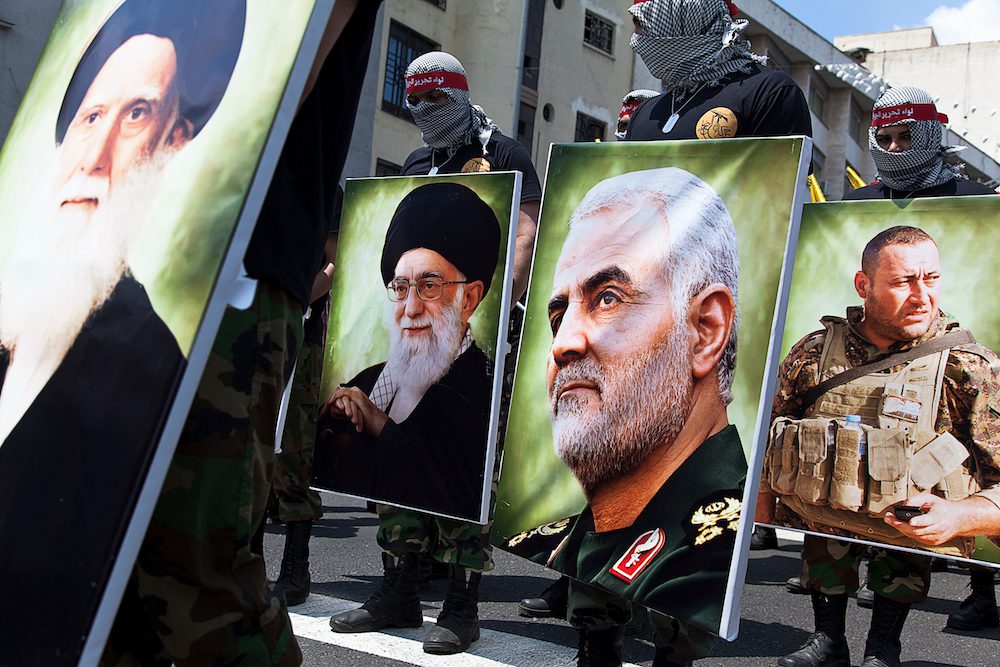How Washington and Iranian Hardliners Think Alike

In an article on Foreign Affairs, Eric Edelman and Ray Takeyh argue that “the United States must expand the Trump administration’s highly successful campaign of ‘maximum pressure’ against the Iranian economy” in order to prepare the conditions “that would make the demise [of Islamic Republic] possible.” Moreover, they call on the Trump Administration to assist or give financial aid to the “pro-democracy forces,” otherwise known as “reformists.”
While the authors’ emphasis on expanding the “maximum pressure” campaign against Iran with no regard to actual hardships hints at their Machiavellian mindsets, a brief look at history indicates that the U.S. has always weakened the pro-democracy forces in Iran, as Washington has been busy thinking only about its own interests.
After his ascension to power in 1941, the young Mohammad-Reza Pahlavi attempted to continue his father’s legacy, which was ruling rather than reigning over the country, a blunt violation of the constitution. In the first decade, however, he proved unskilled at manipulating elections like his father, and was forced to yield and grant back the parliament’s authority and power. Nevertheless, the young Shah, who had lost the most important pillars of its power, succeeded in holding its grip over the army with the help of allies.
The upside was that for the first time after 16 years of his father’s dictatorship, prime ministers were eventually named by parliamentarians who were chosen through real elections. Fearing the Shah’s dictatorship, some political figures and prime ministers, including Ahmad Qavam, planned to contain Shah’s power and stop him from interfering in the executive branch, but the West decided to side with Shah.
In 1953, in a CIA-led coup, the democratically elected prime minister Mohammad Mosaddegh, who was related to Qavam by blood, was toppled. The popular old man had nationalized the oil industry of Iran and taken over the “War ministry” and control over the army in order to curb the young Shah’s power.
Nonetheless, thanks to the U.S. and UK, the symbol of pro-democracy forces in Iranian history was toppled, arrested, and exiled until his death a decade later, a historical fact denied to a large extent in Takyeh’s article. The Shah’s decade-long dream was realized as he finally consolidated his absolute power after the U.S.-led overthrow of Mossadegh. In the following years, the U.S. and West didn’t heed the pro-democracy forces being crushed by Shah’s security apparatus, nor the blatant dictatorship, as the Shah kept on protecting the U.S. interests.
Pro-democracy forces were undermined after the 1979 Islamic Revolution finally felled the Shah, too. For instance, in the 2009 presidential election, the reformists and pro-democracy forces charged that the ballots were rigged, staging widespread protests across the country.
In 2013, after a few years of purges, the reformists and moderates came to power. President Hassan Rouhani soon reached a nuclear deal with 5+1 partners (including the U.S.) in 2015, despite the hardliners’ fierce opposition. Following the nuclear deal, the radicals were completely isolated, and the pro-democracy forces were bent and determined to make positive changes in the country. However, they didn’t have enough time, as Donald Trump arrived and scrapped the deal, giving the hardliners an excuse to reprimand and isolate the reformists.
What enabled Mosaddegh to defy the Shah, and what empowered Rouhani to resist the radicals in the first years of his presidency, was their social capital. The U.S. toppled the former, and took away the treasure of people’s support from Rouhani by reimposition of strict sanctions and downing the country’s economy, dismaying and then distancing the people from the reformists. And once again, the path of change in Iran was blocked by the U.S. government.
What is clear is that in the past 70 years, Washington’s meddling and punitive policies have been serving as a gift to hardliners, while toppling and undermining reformers.
This has been entirely lost on DC-based pundits who clearly have a misguided and superficial understanding of Iranian society, as can be seen in this sentence by Takyeh: “Washington would have to make clear to Iran’s new rulers [after toppling the Islamic Republic] that any aid would depend on their complete abandonment of the country’s nuclear weapons program.”
They seem ignorant of the fact that there has been a recent rise of nationalist voices in the pro-democracy circles, who strongly opine that Tehran should equip itself with nuclear weapon in the face of U.S. “bullying.” They assume that territorial integrity of Iran is being threatened. The millions of people pouring in the streets of Iran to mourn the assassination of General Qassem Soleimani is also an indication of this sentiment. In reality, the Islamic Republic didn’t bring out the people, nationalism did.
Simply put, end the “maximum pressure” campaign. The pro-democracy movement in Iran doesn’t need or want U.S. help or financial aid, it just needs (and wants) to be left alone.
Rohollah Faghihi is a freelance journalist covering Iran. He has been featured in Al Monitor, Foreign Policy, and Middle East Eye. Follow him on Twitter @faghihirohollah
Comments